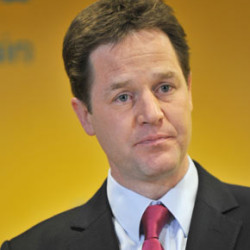The Liberal Democrat conference is in full swing. What is the scale of their challenge?
Current opinion polls point to the Liberal Democrats being ‘wiped out’ in the 2015 general election. The Liberal Democrats are currently polling at around 7% (YouGov, October 2014), while in April 2010, one month before the 2010 general election, they were polling at 19% (YouGov). The view that the Liberal Democrats will be ‘wiped out’ is a result of declining popularity for the Liberal Democrat and Deputy Prime Minister Nick Clegg since entering into coalition government with the Conservatives. This decline in support has been exemplified with disastrous European Parliamentary results for the Liberal Democrats in May 2014, which witnessed the party lose ten of its eleven MEPs and which left the party in fifth place behind the Conservatives, Labour, UKIP and the Greens. However, another view suggests that the Liberal Democrats can’t possibly perform as badly as widely reported and that many 2010 Liberal Democrat voters will vote for the party once again in the 2015 general election.
So if there were a general election tomorrow would those people who voted for the Liberal Democrats in May 2010 vote for them again?
The British Election Study Internet Panel (BESIP) provides two surveys to examine 2015 vote intentions: one was conducted in February-March and one in May-June 2014. These surveys asked respondents which party they intend to vote for in the 2015 general election. We also know which political party people reported voting for in 2010. The following table reveals the 2015 vote intentions among those people who reported voting Liberal Democrat in 2010.
We can see that between 22-25% of people who voted Liberal Democrat in May 2010 will still vote Liberal Democrat in May 2015. Or to put it another way, the Liberal Democrats are set to lose 75-78% of their 2010 vote! If that were indeed to happen, it would be a devastating blow for the party.
There also looks to be a significant redistribution of the 2010 Liberal Democrat vote. Most of the 2010 Liberal Democrat voters are intending to vote Labour (27%) in the 2015 general election. This is not surprising given the fact that Liberal Democrat voters tend to be ideologically closer to the centre-left and they will no longer see the Liberal Democrats as an anti-Conservative vote (given the fact they have spent the past three and a half years in a coalition government with the Conservatives). This explains the movement towards both Labour and the Greens (a switch to 5-8%, above). Perhaps the first indication that the Greens are quietly gaining votes from the Liberal Democrats was demonstrated in the European Parliamentary elections in May when the Greens returned three MEP’s in comparison to the Liberal Democrats one to the European Parliament.
What is also interesting and somewhat surprising is the pick up of Liberal Democrat votes by the Conservatives (9-10%) and UKIP (9-11%). The Conservatives appear poised to gain some votes from their coalition partners while UKIP continue to pick up votes from all three main political parties (see UKIP: Picking up lumps of old Labour support?).
A significant proportion (around 20%) of prior Liberal Democrat voters are now undecided. These undecided Liberal Democrats are the crucial group for the party – will they abstain from voting altogether in 2015 or will they return to the Liberal Democrats or vote for another party? The changes in 2015 vote intention among those people who voted Liberal Democrat in 2010 between the first (February-March) and second (May-June) BESIP survey show small increases for the Conservatives, UKIP and the Green Party. The worry for the Liberal Democrats is that so far the decline in undecided prior Liberal Democrat voters appears to be benefiting other parties.
So is it actually feasible to talk of a Liberal Democrat ‘wipe out’ in 2015? Following the introduction of their seat targeting strategy in general elections, the Liberal Democrats seat distribution from 1992 onwards has become more efficient. This concentration of Liberal Democrat votes into key seats will be paramount in distributing their declining vote share into their number of MPs come May 8th 2015.


